 | –≠–ª–µ–∫—Ç—Ä–æ–Ω–Ω—ã–π –∫–æ–º–ø–æ–Ω–µ–Ω—Ç: TLHG4201 | –°–∫–∞—á–∞—Ç—å:  PDF PDF  ZIP ZIP |
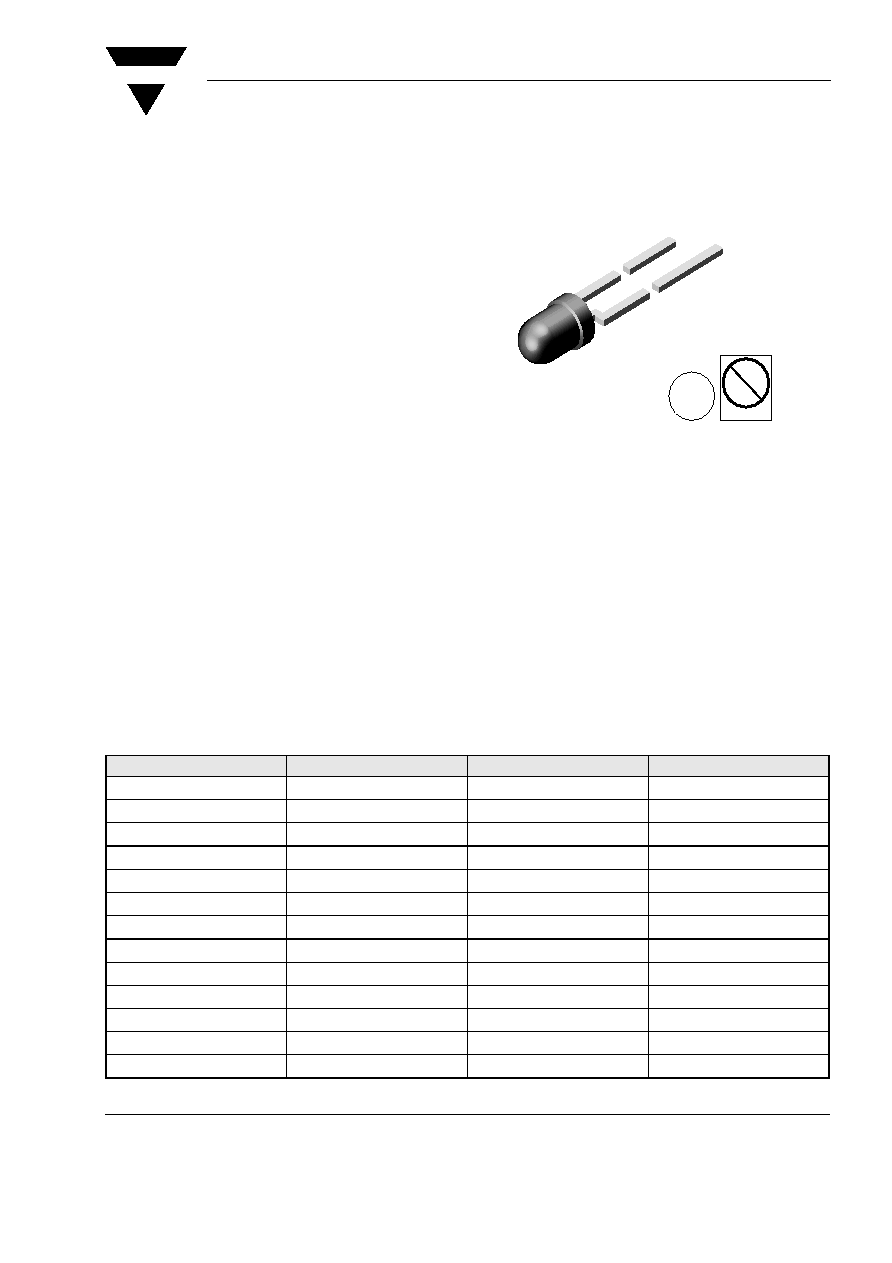
VISHAY
TLHG / O / P / R / Y420.
Document Number 83005
Rev. 1.3, 31-Aug-04
Vishay Semiconductors
www.vishay.com
1
e3 Pb
Pb-free
19220
High Efficiency LED,
3 mm Tinted Undiffused Package
Description
The TLH.42.. series was developed for standard
applications like general indicating and lighting pur-
poses.
It is housed in a 3 mm tinted clear plastic package.
The wide viewing angle of these devices provides a
high on-off contrast.
Several selection types with different luminous inten-
sities are offered. All LEDs are categorized in lumi-
nous intensity groups. The green and yellow LEDs
are categorized additionally in wavelength groups.
That allows users to assemble LEDs with uniform
appearance.
Features
∑ Choice of five bright colors
∑ Standard T-1 package
∑ Small mechanical tolerances
∑ Suitable for DC and high peak current
∑ Wide viewing angle
∑ Luminous intensity categorized
∑ Yellow and green color categorized
∑ Lead-free device
Applications
Status lights
OFF / ON indicator
Background illumination
Readout lights
Maintenance lights
Legend light
Parts Table
Part
Color, Luminous Intensity
Angle of Half Intensity (±
)
Technology
TLHR4200
Red, I
V
> 4 mcd
22 ∞
GaAsP on GaP
TLHR4201
Red, I
V
> 6.3 mcd
22 ∞
GaAsP on GaP
TLHR4205
Red, I
V
> 10 mcd
22 ∞
GaAsP on GaP
TLHO4200
Soft orange, I
V
> 4 mcd
22 ∞
GaAsP on GaP
TLHO4201
Soft orange, I
V
> 10 mcd
22 ∞
GaAsP on GaP
TLHY4200
Yellow, I
V
> 4 mcd
22 ∞
GaAsP on GaP
TLHY4201
Yellow, I
V
> 6.3 mcd
22 ∞
GaAsP on GaP
TLHY4205
Yellow, I
V
> 10 mcd
22 ∞
GaAsP on GaP
TLHG4200
Green, I
V
> 6.3 mcd
22 ∞
GaP on GaP
TLHG4201
Green, I
V
> 10 mcd
22 ∞
GaP on GaP
TLHG4205
Green, I
V
> 16 mcd
22 ∞
GaP on GaP
TLHP4200
Pure green, I
V
> 2.5 mcd
22 ∞
GaP on GaP
TLHP4201
Pure green, I
V
> 6.3 mcd
22 ∞
GaP on GaP
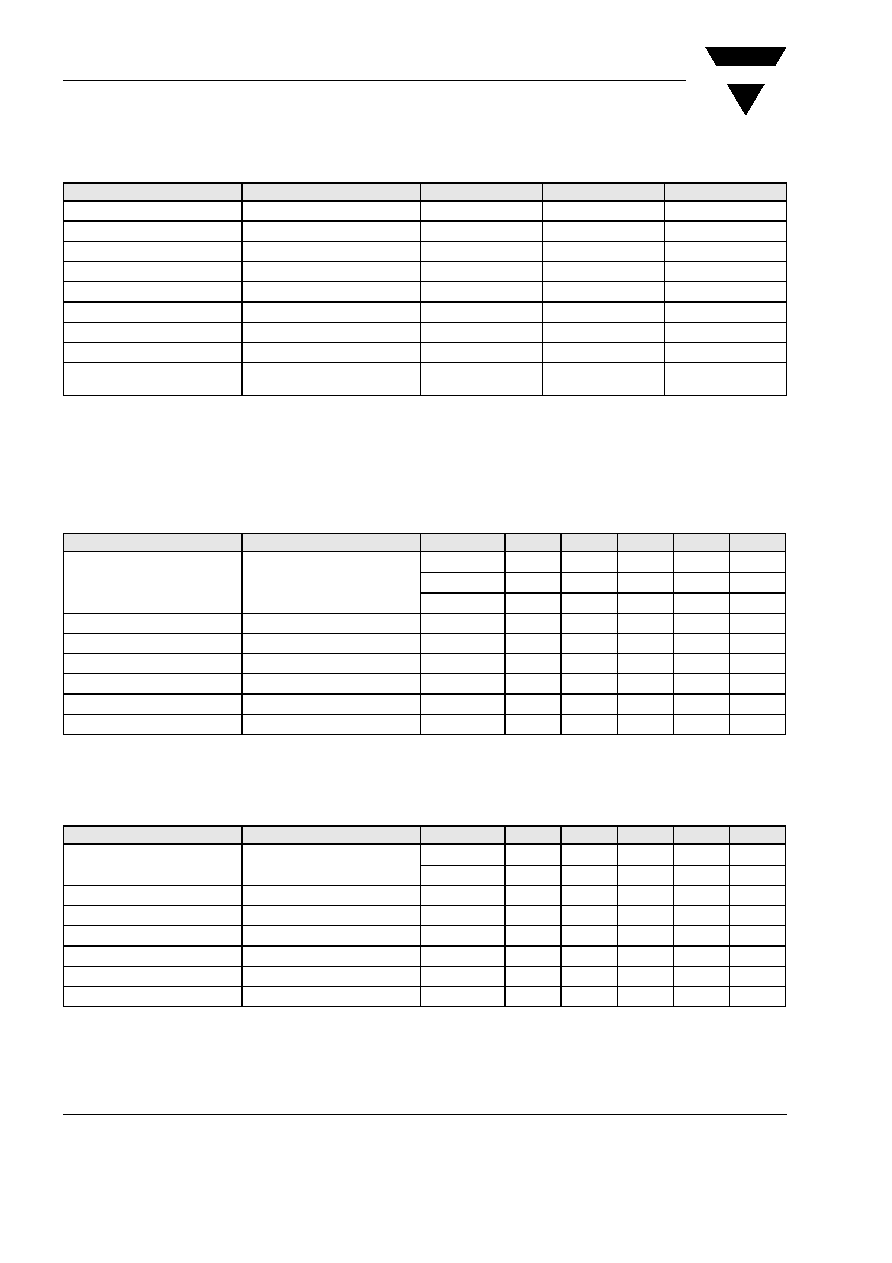
www.vishay.com
2
Document Number 83005
Rev. 1.3, 31-Aug-04
VISHAY
TLHG / O / P / R / Y420.
Vishay Semiconductors
Absolute Maximum Ratings
T
amb
= 25 ∞C, unless otherwise specified
TLHR42.. ,TLHO42.. , TLHY42.. , TLHG42.. , TLHP42..
Optical and Electrical Characteristics
T
amb
= 25 ∞C, unless otherwise specified
Red
TLHR42..
1)
in one Packing Unit I
Vmin
/I
Vmax
0.5
Soft Orange
TLHO42..
1)
in one Packing Unit I
Vmin
/I
Vmax
0.5
Parameter
Test condition
Symbol
Value
Unit
Reverse voltage
V
R
6
V
DC Forward current
I
F
30
mA
Surge forward current
t
p
10 µs
I
FSM
1
A
Power dissipation
T
amb
60 ∞C
P
V
100
mW
Junction temperature
T
j
100
∞C
Operating temperature range
T
amb
- 40 to + 100
∞C
Storage temperature range
T
stg
- 55 to + 100
∞C
Soldering temperature
t
5 s, 2 mm from body
T
sd
260
∞C
Thermal resistance junction/
ambient
R
thJA
400
K/W
Parameter
Test condition
Part
Symbol
Min
Typ.
Max
Unit
Luminous intensity
1)
I
F
= 10 mA
TLHR4200
I
V
4
8
mcd
TLHR4201
I
V
6.3
10
mcd
TLHR4205
I
V
10
15
mcd
Dominant wavelength
I
F
= 10 mA
d
612
625
nm
Peak wavelength
I
F
= 10 mA
p
635
nm
Angle of half intensity
I
F
= 10 mA
± 22
deg
Forward voltage
I
F
= 20 mA
V
F
2
3
V
Reverse voltage
I
R
= 10
µA
V
R
6
15
V
Junction capacitance
V
R
= 0, f = 1 MHz
C
j
50
pF
Parameter
Test condition
Part
Symbol
Min
Typ.
Max
Unit
Luminous intensity
1)
I
F
= 10 mA
TLHO4200
I
V
4
10
mcd
TLHO4201
I
V
10
18
mcd
Dominant wavelength
I
F
= 10 mA
d
598
611
nm
Peak wavelength
I
F
= 10 mA
p
605
nm
Angle of half intensity
I
F
= 10 mA
± 22
deg
Forward voltage
I
F
= 20 mA
V
F
2.4
3
V
Reverse current
V
R
= 6 V
I
R
10
µA
Junction capacitance
V
R
= 0, f = 1 MHz
C
j
50
pF
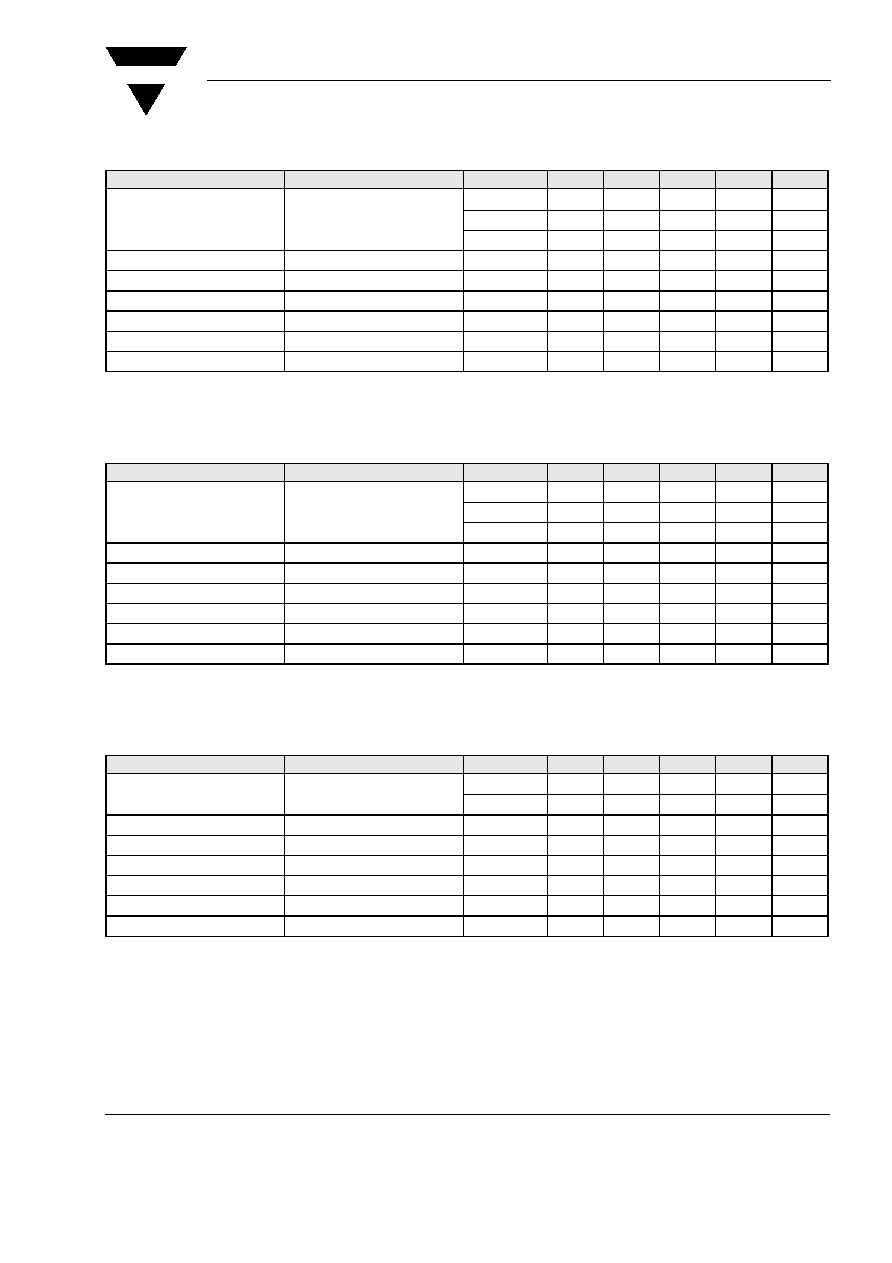
VISHAY
TLHG / O / P / R / Y420.
Document Number 83005
Rev. 1.3, 31-Aug-04
Vishay Semiconductors
www.vishay.com
3
Yellow
TLHY42..
1)
in one Packing Unit I
Vmin
/I
Vmax
0.5
Green
TLHG42..
1)
in one Packing Unit I
Vmin
/I
Vmax
0.5
Pure green
TLHP42..
1)
in one Packing Unit I
Vmin
/I
Vmax
0.5
Parameter
Test condition
Part
Symbol
Min
Typ.
Max
Unit
Luminous intensity
1)
I
F
= 10 mA
TLHY4200
I
V
4
10
mcd
TLHY4201
I
V
6.3
15
mcd
TLHY4205
I
V
10
20
mcd
Dominant wavelength
I
F
= 10 mA
d
581
594
nm
Peak wavelength
I
F
= 10 mA
p
585
nm
Angle of half intensity
I
F
= 10 mA
± 22
deg
Forward voltage
I
F
= 20 mA
V
F
2.4
3
V
Reverse voltage
I
R
= 10
µA
V
R
6
15
V
Junction capacitance
V
R
= 0, f = 1 MHz
C
j
50
pF
Parameter
Test condition
Part
Symbol
Min
Typ.
Max
Unit
Luminous intensity
1)
I
F
= 10 mA
TLHG4200
I
V
6.3
10
mcd
TLHG4201
I
V
10
15
mcd
TLHG4205
I
V
16
20
mcd
Dominant wavelength
I
F
= 10 mA
d
562
575
nm
Peak wavelength
I
F
= 10 mA
p
565
nm
Angle of half intensity
I
F
= 10 mA
± 22
deg
Forward voltage
I
F
= 20 mA
V
F
2.4
3
V
Reverse voltage
I
R
= 10
µA
V
R
6
15
V
Junction capacitance
V
R
= 0, f = 1 MHz
C
j
50
pF
Parameter
Test condition
Part
Symbol
Min
Typ.
Max
Unit
Luminous intensity
1)
I
F
= 10 mA
TLHP4200
I
V
2.5
7
mcd
TLHP4201
I
V
6.3
20
mcd
Dominant wavelength
I
F
= 10 mA
d
555
565
nm
Peak wavelength
I
F
= 10 mA
p
555
nm
Angle of half intensity
I
F
= 10 mA
± 22
deg
Forward voltage
I
F
= 20 mA
V
F
2.4
3
V
Reverse voltage
I
R
= 10
µA
V
R
6
15
V
Junction capacitance
V
R
= 0, f = 1 MHz
C
j
50
pF
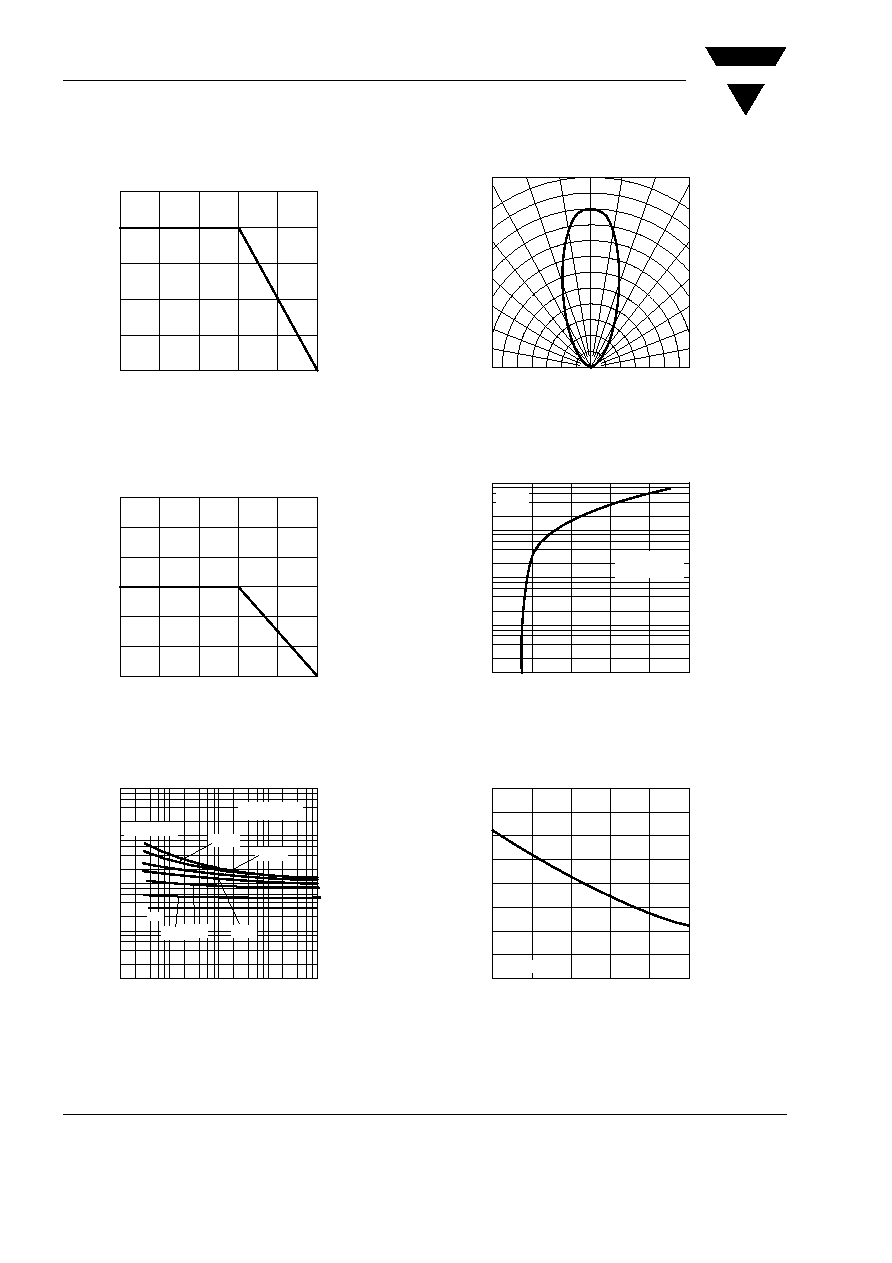
www.vishay.com
4
Document Number 83005
Rev. 1.3, 31-Aug-04
VISHAY
TLHG / O / P / R / Y420.
Vishay Semiconductors
Typical Characteristics
(T
amb
= 25
∞C unless otherwise specified)
Figure 1. Power Dissipation vs. Ambient Temperature
Figure 2. Forward Current vs. Ambient Temperature for InGaN
Figure 3. Forward Current vs. Pulse Length
100
80
60
40
0
25
50
75
100
125
P
-
Power
Dissipation
(
m
W
)
V
T
amb
- Ambient Temperature ( ∞C )
95 10904
20
0
0
10
20
30
40
60
I
-
Forward
Current
(
m
A
)
F
95 10905
50
T
amb
- Ambient Temperature ( ∞C )
100
80
60
40
20
0
0.02
0.05
0.1
0.2
1
0.5
i
t
p
/T= 0.01
T
amb
65
∞C
0.01
0.1
1
10
1
10
100
1000
10000
t
p
- Pulse Length ( ms )
100
95 10047
I
-
Forward
Current
(
m
A
)
F
Figure 4. Rel. Luminous Intensity vs. Angular Displacement
Figure 5. Forward Current vs. Forward Voltage
Figure 6. Rel. Luminous Intensity vs. Ambient Temperature
0.4
0.2
0
0.2
0.4
0.6
95 10041
0.6
0.9
0.8
0
∞
∞
∞
30∞
10
20
40∞
50∞
60∞
70∞
80∞
0.7
1.0
I
-
Relative
Luminous
Intensity
Vrel
Red
t
p
/T = 0.001
t
p
= 10
µs
0.1
1
10
100
1000
95 10026
V
F
- Forward Voltage ( V )
I
-
Forward
Current
(
m
A
)
F
10
8
6
4
2
0
0
0
0.4
0.8
1.2
1.6
95 10027
20
40
60
80
100
I
-
Relative
Luminous
Intensity
v
rel
T
amb
- Ambient Temperature ( ∞C )
I
F
= 10 mA
Red
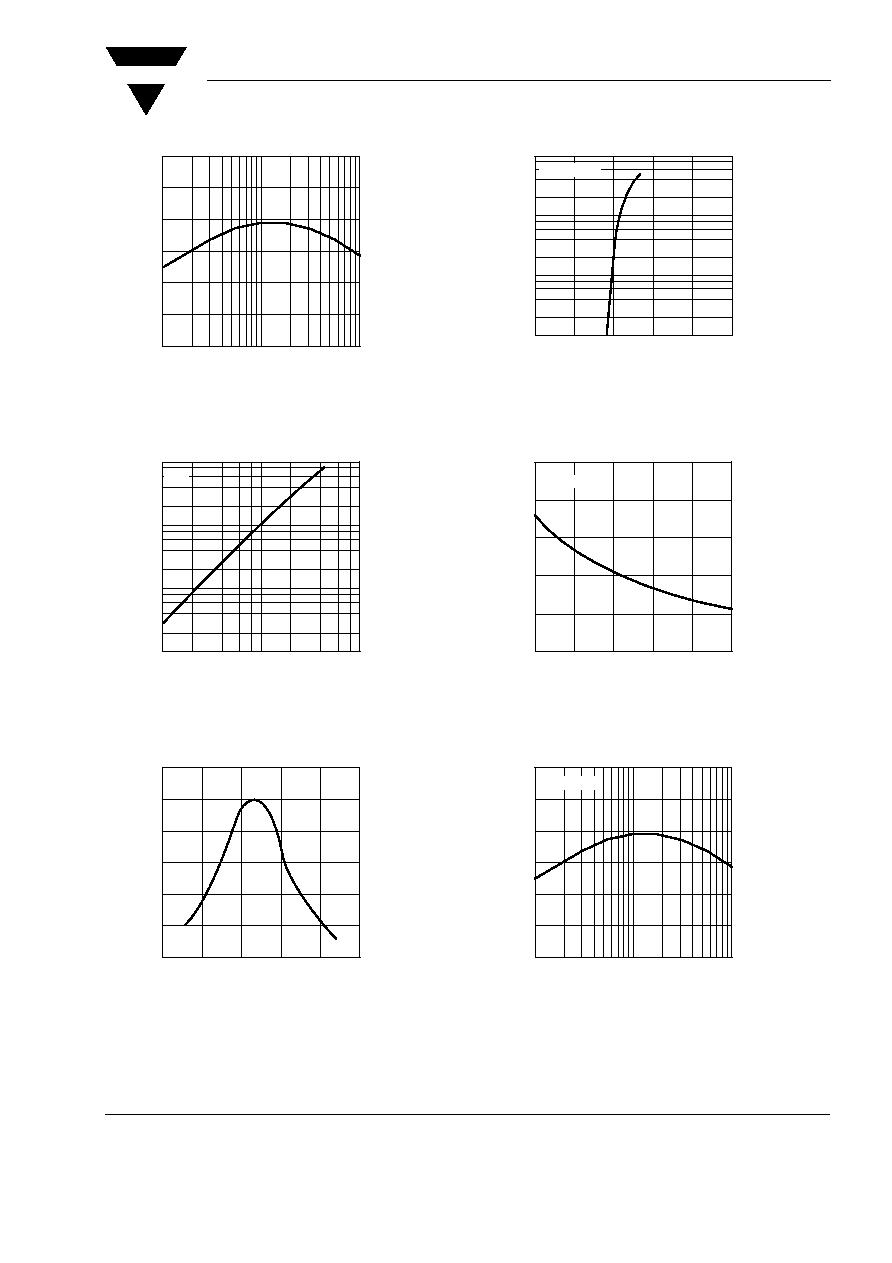
VISHAY
TLHG / O / P / R / Y420.
Document Number 83005
Rev. 1.3, 31-Aug-04
Vishay Semiconductors
www.vishay.com
5
Figure 7. Rel. Lumin. Intensity vs. Forw. Current/Duty Cycle
Figure 8. Relative Luminous Intensity vs. Forward Current
Figure 9. Relative Intensity vs. Wavelength
10
20
50
100
200
0
0.4
0.8
1.2
1.6
2.4
95 10321
500
0.5
0.2
0.1
0.05
0.02
1
I
F
(mA)
t
p
/T
2.0
Red
I
-
Relative
Luminous
Intensity
Vr
e
l
0.01
0.1
1
10
I
F
- Forward Current ( mA )
100
10
95 10029
I
-
Relative
Luminous
Intensity
v
rel
Red
1
590
610
630
650
670
0
0.2
0.4
0.6
0.8
1.2
690
95 10040
i
- Wavelength ( nm )
1.0
Red
I
-
Relative
Luminous
Intensity
Vr
e
l
Figure 10. Forward Current vs. Forward Voltage
Figure 11. Rel. Luminous Intensity vs. Ambient Temperature
Figure 12. Rel. Lumin. Intensity vs. Forw. Current/Duty Cycle
0.1
1
10
100
95 9990
I
-
Forward
Current
(
m
A
)
F
Soft Orange
V
F
- Forward Voltage ( V )
5
4
3
2
1
0
95 9994
Soft Orange
0
0.4
0.8
1.2
1.6
2.0
100
I
-
Relative
Luminous
Intensity
v
rel
T
amb
- Ambient Temperature (∞C )
0
20
40
60
80
95 10259
Soft Orange
10
20
50
100 200
0
0.4
0.8
1.2
1.6
2.4
500
0.5
0.2
0.1 0.05
0.02
1
I
F
(mA)
t
p
/T
2.0
I
-
Relative
Luminous
Intensity
Vr
e
l
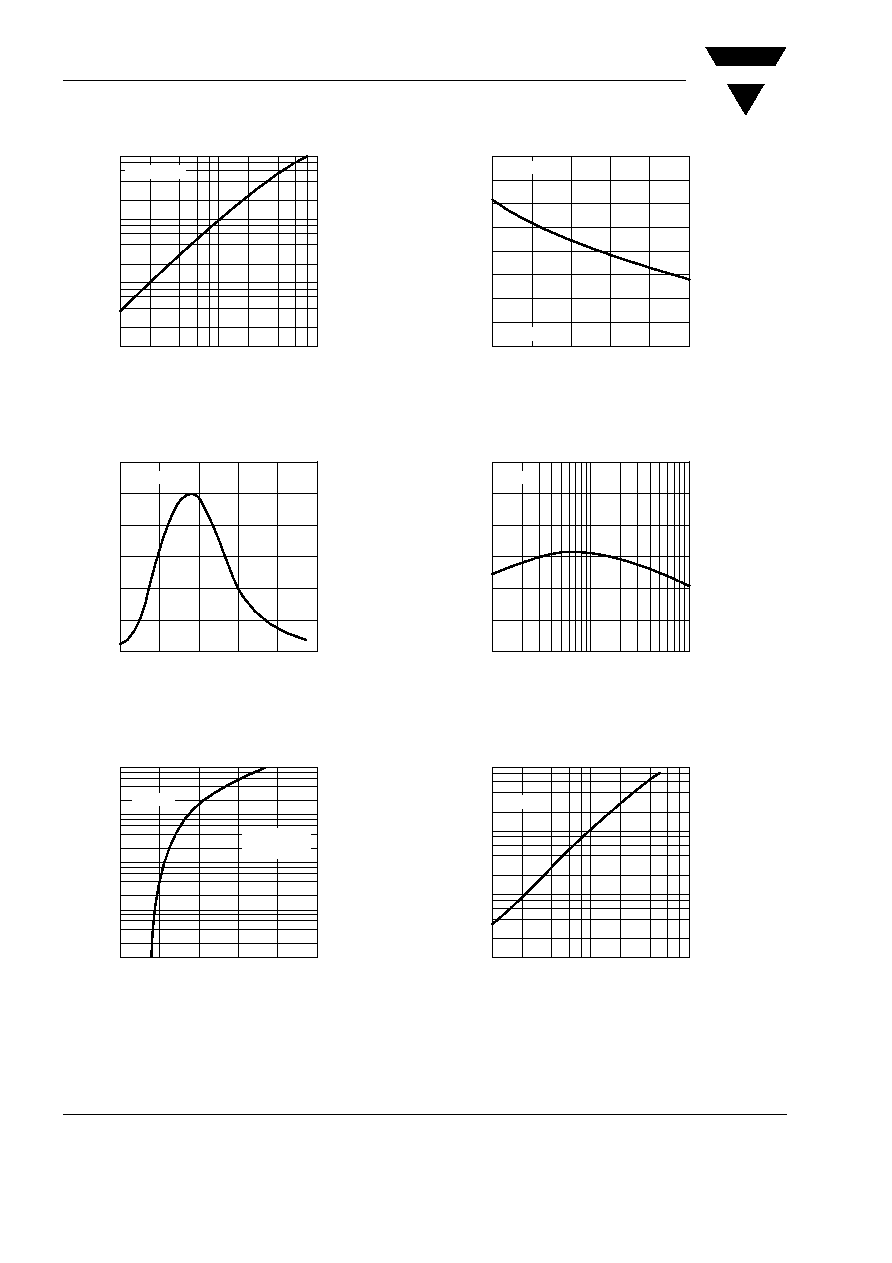
www.vishay.com
6
Document Number 83005
Rev. 1.3, 31-Aug-04
VISHAY
TLHG / O / P / R / Y420.
Vishay Semiconductors
Figure 13. Relative Luminous Intensity vs. Forward Current
Figure 14. Relative Intensity vs. Wavelength
Figure 15. Forward Current vs. Forward Voltage
0.01
0.1
1
10
100
1
10
I
F
- Forward Current ( mA )
95 9997
I
-
Relative
Luminous
Intensity
v
rel
Soft Orange
95 10324
Soft Orange
570
590
610
630
650
0
0.2
0.4
0.6
0.8
1.2
670
- Wavelength ( nm )
1.0
I
-
Relative
Luminous
Intensity
Vrel
0.1
1
10
100
1000
10
8
6
4
2
0
95 10030
V
F
- Forward Voltage ( V )
I
-
Forward
Current
(
m
A
)
F
Yellow
t
p
/T = 0.001
t
p
= 10
µs
Figure 16. Rel. Luminous Intensity vs. Ambient Temperature
Figure 17. Rel. Lumin. Intensity vs. Forw. Current/Duty Cycle
Figure 18. Relative Luminous Intensity vs. Forward Current
0
0
0.4
0.8
1.2
1.6
95 10031
20
40
60
80
100
I
-
Relative
Luminous
Intensity
v
rel
T
amb
- Ambient Temperature ( ∞C )
Yellow
I
F
= 10 mA
Yellow
10
20
50
100 200
0
0.4
0.8
1.2
1.6
2.4
95 10260
500
0.5
0.2
0.1 0.05
0.02
1
I
F
(mA)
t
p
/T
I
-
Relative
Luminous
Intensity
v
rel
2.0
Yellow
I
F
- Forward Current ( mA )
100
0.1
1
10
95 10033
I
-
Relative
Luminous
Intensity
v
rel
10
1
0.01

VISHAY
TLHG / O / P / R / Y420.
Document Number 83005
Rev. 1.3, 31-Aug-04
Vishay Semiconductors
www.vishay.com
7
Figure 19. Relative Intensity vs. Wavelength
Figure 20. Forward Current vs. Forward Voltage
Figure 21. Rel. Luminous Intensity vs. Ambient Temperature
550
570
590
610
630
0
0.2
0.4
0.6
0.8
1.2
650
95 10039
-
- Wavelength ( nm )
1.0
Yellow
I
-
Relative
Luminous
Intensity
Vrel
0.1
1
10
100
1000
10
8
6
4
2
0
95 10034
V
F
- Forward Voltage ( V )
I
-
Forward
Current
(
m
A
)
F
Green
t
p
/T = 0.001
t
p
= 10
µs
0
0.4
0.8
1.2
1.6
95 10035
I
-
Relative
Luminous
Intensity
v
rel
Green
I
F
= 10 mA
T
amb
- Ambient Temperature (∞C )
20
40
60
80
0
100
Figure 22. Specific Luminous Intensity vs. Forward Current
Figure 23. Relative Luminous Intensity vs. Forward Current
Figure 24. Relative Intensity vs. Wavelength
10
20
50
100 200
0
0.4
0.8
1.2
1.6
2.4
95 10263
500
v
rel
2.0
Green
I
-
Specific
Luminous
Intensity
I
F
(mA)
0.5
0.2 0.1
0.05
0.02
1
t
p
/T
I
F
- Forward Current ( mA )
100
Green
0.1
1
10
95 10037
I
-
Relative
Luminous
Intensity
v
rel
10
1
520
540
560
580
600
0
0.2
0.4
0.6
0.8
1.2
620
95 10038
-
- Wavelength ( nm )
1.0
Green
I
-
Relative
Luminous
Intensity
Vrel
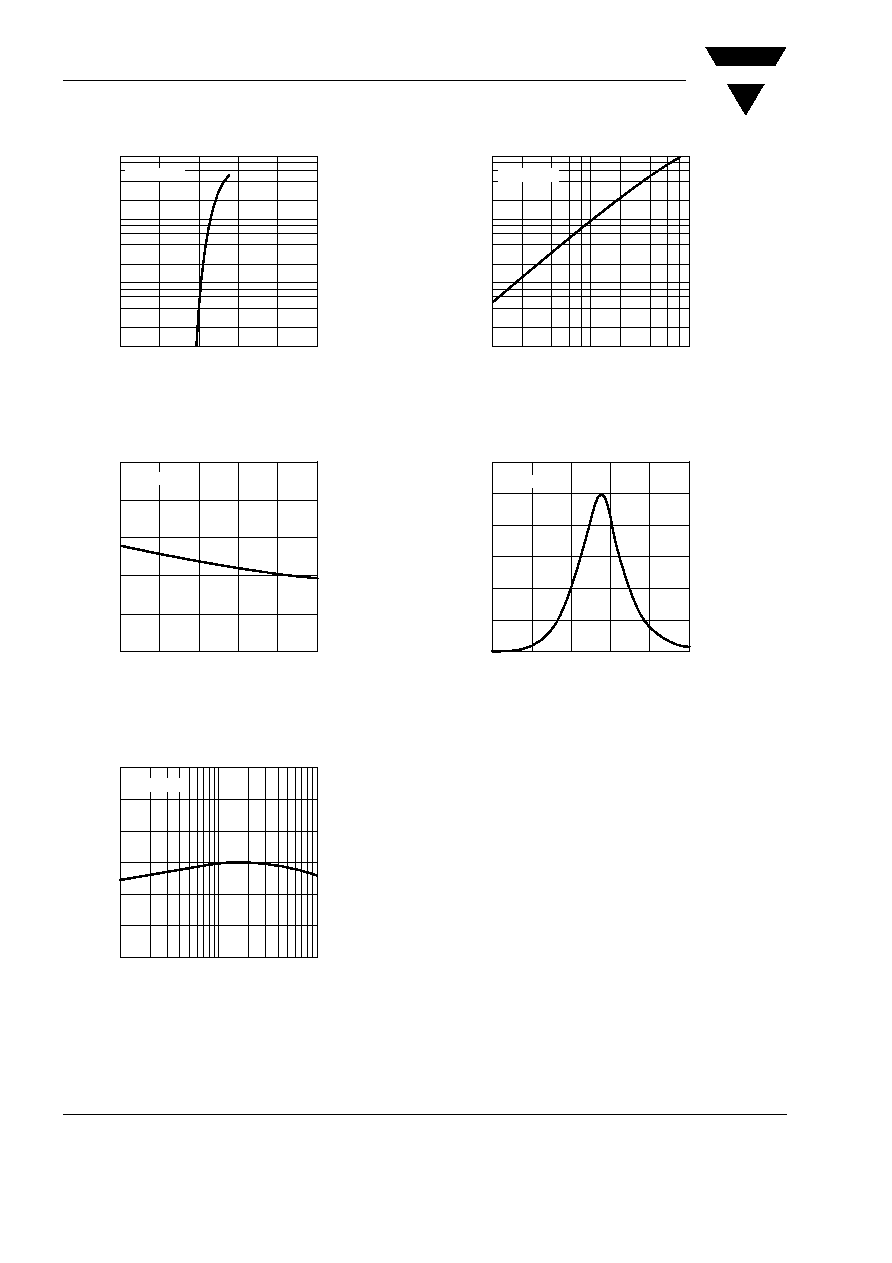
www.vishay.com
8
Document Number 83005
Rev. 1.3, 31-Aug-04
VISHAY
TLHG / O / P / R / Y420.
Vishay Semiconductors
Figure 25. Forward Current vs. Forward Voltage
Figure 26. Rel. Luminous Intensity vs. Ambient Temperature
Figure 27. Specific Luminous Intensity vs. Forward Current
0
1
2
3
4
0.1
1
10
100
5
95 9988
Pure Green
F
I
≠F
orward
Current
(
m
A
)
V
F
≠ Forward Voltage ( V )
0
0.4
0.8
1.2
1.6
2.0
95 9991
Pure Green
I
-
Relative
Luminous
Intensity
Vrel
T
amb
- Ambient Temperature ( ∞C )
0
100
80
60
40
20
95 10261
10
1000
100
0
0.4
0.8
1.2
1.6
2.4
2.0
Pure Green
I
-
Specific
Luninous
Flux
Spec
I
F
- Forward Current ( mA )
Figure 28. Relative Luminous Intensity vs. Forward Current
Figure 29. Relative Intensity vs. Wavelength
0.01
0.1
1
10
100
10
1
95 9998
Pure Green
I
-
Relative
Luminous
Intensity
Vrel
I
F
- Forward Current ( mA )
500
520
540
560
580
0
0.2
0.4
0.6
0.8
1.2
600
95 10325
1.0
Pure Green
- Wavelength ( nm )
I
-
Relative
Luminous
Intensity
Vrel

VISHAY
TLHG / O / P / R / Y420.
Document Number 83005
Rev. 1.3, 31-Aug-04
Vishay Semiconductors
www.vishay.com
9
Package Dimensions in mm
95 10913

www.vishay.com
10
Document Number 83005
Rev. 1.3, 31-Aug-04
VISHAY
TLHG / O / P / R / Y420.
Vishay Semiconductors
Ozone Depleting Substances Policy Statement
It is the policy of Vishay Semiconductor GmbH to
1. Meet all present and future national and international statutory requirements.
2. Regularly and continuously improve the performance of our products, processes, distribution and
operatingsystems with respect to their impact on the health and safety of our employees and the public, as
well as their impact on the environment.
It is particular concern to control or eliminate releases of those substances into the atmosphere which are
known as ozone depleting substances (ODSs).
The Montreal Protocol (1987) and its London Amendments (1990) intend to severely restrict the use of ODSs
and forbid their use within the next ten years. Various national and international initiatives are pressing for an
earlier ban on these substances.
Vishay Semiconductor GmbH has been able to use its policy of continuous improvements to eliminate the
use of ODSs listed in the following documents.
1. Annex A, B and list of transitional substances of the Montreal Protocol and the London Amendments
respectively
2. Class I and II ozone depleting substances in the Clean Air Act Amendments of 1990 by the Environmental
Protection Agency (EPA) in the USA
3. Council Decision 88/540/EEC and 91/690/EEC Annex A, B and C (transitional substances) respectively.
Vishay Semiconductor GmbH can certify that our semiconductors are not manufactured with ozone depleting
substances and do not contain such substances.
We reserve the right to make changes to improve technical design
and may do so without further notice.
Parameters can vary in different applications. All operating parameters must be validated for each
customer application by the customer. Should the buyer use Vishay Semiconductors products for any
unintended or unauthorized application, the buyer shall indemnify Vishay Semiconductors against all
claims, costs, damages, and expenses, arising out of, directly or indirectly, any claim of personal
damage, injury or death associated with such unintended or unauthorized use.
Vishay Semiconductor GmbH, P.O.B. 3535, D-74025 Heilbronn, Germany
Telephone: 49 (0)7131 67 2831, Fax number: 49 (0)7131 67 2423









